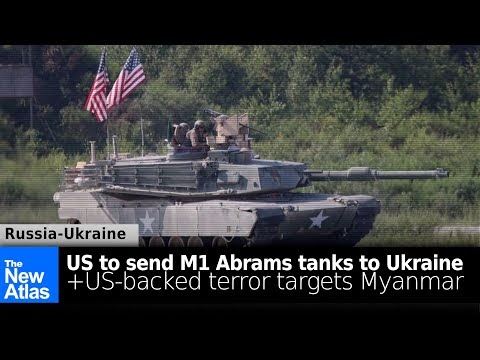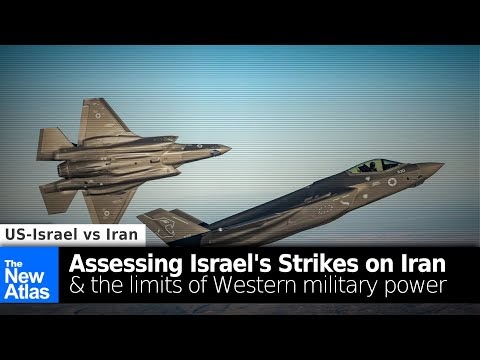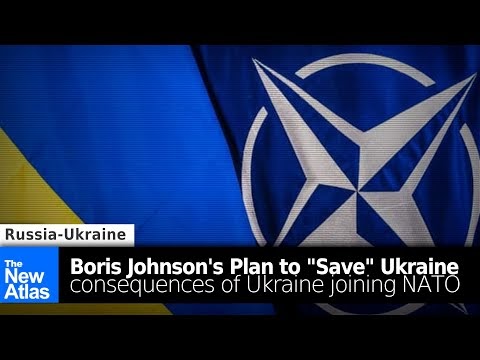January 29, 2023 (Brian Berletic – New Eastern Outlook) – The recent announcement that the United States will be sending at least 31 M1 Abrams tanks along with a growing number of German Leopard 2 main battle tanks comes as Ukrainian forces find themselves losing ground across much of the line of contact.
Articles like the Guardian’s, “US joins Germany in sending tanks to Ukraine as Biden hails ‘united’ effort,” claim:
Joe Biden has approved sending 31 M1 Abrams tanks to Ukraine, a significant escalation in the US effort to counter Russian aggression as international reluctance to send tanks to the battlefront falls away.
The reversal of the US’s previous position came after Germany confirmed it will make 14 of its Leopard 2A6 tanks available for Ukraine’s war effort, and give partner countries its permission to re-export other battle tanks to aid Kyiv.
It also says:
“Putin expected Europe and the United States to weaken our resolve,” Biden said in the Roosevelt Room at the White House. “He expected our support for Ukraine to crumble with time. He was wrong. He was wrong. He was wrong from the beginning and he continues to be wrong.”
Yet despite the apparent uptick in support, upon closer analysis it appears practical support for Ukraine has long-since been exhausted and the West has now resorted to “wonder weapons” that will have even less impact on the battlefield than previous aid packages.
Not the “Game Changer” Many Think
The idea that the West transferring their main battle tanks to Ukraine will be a “game changer” is rooted in the myth of Western main battle tanks being “superior” to their Russian counterparts. In turn, this myth is owed to their performance in Iraq in 1991 and again during the US invasion of Iraq in 2003 where modern US and British main battle tanks went up against Soviet-era export versions of the T-72.
Not only do several experienced US military officers warn against this misconception, the performance of Western main battle tanks in recent conflicts tells a much different story.
Former US Army Lieutenant Colonel Daniel Davis in a recent article published by 1945 helps dispel the myths surrounding Western tank performance in Iraq and asked the question whether or not these high-tech tanks will make a difference – allowing Ukrainian forces to drive Russian forces from territory Kiev claims is Ukrainian.
He points out the critical factors that actually lead to a US victory in Iraq. He explains:
In Desert Storm, U.S. M1A1 Abrams tanks wiped out Saddam Hussein’s fleets of Soviet-made T-72s, and again the American Abrams-led invasion in 2003 revealed the T-72 was no match for U.S. tanks. And truly the American tanks were witheringly successful. During Desert Storm, for example, the U.S. and its coalition partners destroyed more than 3,000 Iraqi tanks. Saddam’s armored force, however, did not destroy even a single Abrams tank. It’s understandable, then, why anyone would want to have an Abrams or equivalent tank, especially when it has proven so effective against exactly the type of tanks Russia has.
Lt. Col. Davis omits, however, that the tanks used by Iraqi forces during Desert Storm are not comparable to the type of tanks Russia has today.
The T-72s operated by Iraqi forces during Desert Storm were protected only by the steel armor they were originally manufactured with. They lacked night vision and thermal imaging sights, as well as computerized fire control systems that automatically calculate firing solutions for tank gunners taking in account a number of factors including temperature, munition type, wind speed and direction as well as barometric pressure.
Also not mentioned in Lt. Col. Davis’ article is the fact that the US deployed upward to 1,900 Abrams to fight against these far inferior Iraqi tanks and that this immense tank force was supported by an equally massive amount of supporting air power, artillery, and mechanized infantry which when combined is referred to as combined arms warfare.
Lt. Col. Davis does, however, mention a very important factor that worked almost entirely in America’s favor, training.
Training is Key and Training Takes Years
Lt. Col Davis in his article explains:
First, the U.S. crewmen were highly trained as individuals. In my unit, tank drivers, loaders, gunners, and vehicle commanders had all mastered their individual jobs, then for more than a year before battle, had conducted considerable time training as platoons, then at company-level, and later we trained in squadron and eventually regimental levels. No one could have been more ready to fight than we were.
Conversely, Iraqi forces had none of this training. Lt. Col. Davis explains that many Iraqi tankers had little if any practice firing their main guns, little if any unit-level training, and maintenance programs required to keep heavy weapons like a main battle tank operational on the battlefield were “virtually nonexistent.”
The disparity in training was so extreme that Lt. Col. Davis concluded that even if US tankers were operating Iraq’s T-72s and the Iraqis were given American M1 Abrams, the United States still would have won.
He then explains:
In tank fights, the side that accurately fires first almost always wins. In Desert Storm, we almost always fired first, and because of our training, almost never missed. But even when the Iraqi gunners got off a shot, it was rarely on target. The results were fatal for them.
Russian tanks today have computerized fire control systems, night and thermal sights, as well as sophisticated explosive reactive armor (ERA). They will be at least as capable as Western main battle tanks transferred to Ukraine. Russian tanks will also be many times more numerous. Training aside, if tank battles in Ukraine become a matter of who sees who first and delivers the first accurate shot, there will be many more capable Russian tanks looking for and firing at Western tanks.
It takes nearly half a year to train an entry-level tanker to operate a modern Western main battle tank (22 weeks according to the US Army’s website). Western tank crews consist of a driver, a gunner, a loader, and a tank commander. The tank commander will often have years of experience operating the specific tank in question, meaning that there are no Western tank crews composed of just entry-level tankers.
This is an insurmountable problem for Ukraine. While the Western media even admits that it will take months for Ukrainians to learn how to operate and then deploy Western tanks, this is only if crews are given crash courses on how to operate their own individual tanks, omitting any training on how to use tanks together as units.
Many argue that training can be abbreviated and that Ukrainian forces are “highly motivated” and thus somehow capable of compressing years of necessary training and experience into a few weeks. This is simply not true.
US Army Lieutenant General Mark Hertling (retired) in a recent thread on Twitter agrees.
He warned that training can’t be “hand-waved.” If it is, crews will be ineffective on the battlefield while actually causing damage to the tank itself.
The M1 Abrams is propelled by a multi-fuel turbine engine that requires a significant amount of careful driver training to avoid damaging it. A damaged engine needs to be replaced – a non-trivial task on the front line in Ukraine. The engine cannot be maintained by a general mechanic but requires a technician trained and certified to work on it specifically.
Lt. General Hertling points out that virtually everything that breaks on an M1 Abrams will need to be replaced, requiring an 800 km-long logistical line to be established as Ukrainians themselves will not be able to perform the repairs inside Ukraine.
He also points out that other nations using the M1 Abrams including Iraq and Saudi Arabia required a 5 and 7 year training program respectively before standing up their fleets. Both nations still depend on General Dynamics (the tank’s manufacturer) to perform maintenance since technicians in either country have yet to acquire training and equipment to do it themselves.
It is easy then to imagine the complications that will arise attempting to deploy such weapon systems on such short notice in Ukraine.
Ukraine’s Western Tanks Will Fight Alone
Lt. Col. Davis in his article also pointed out that “tanks cannot fight alone or they die.”
He is referring to combined arms warfare – the air, artillery, and mechanized infantry support the US had in abundance when advancing into Iraq – support Ukraine doesn’t and will not have throughout this current conflict.
The example of Ukraine’s offensive toward Kherson was mentioned, pointing out that Ukrainian tanks rushing forward were targeted and destroyed mostly by artillery shells, rockets, and anti-tank missiles. Very few if any tank-on-tank engagements ever took place. Russia eliminated brigades worth of Ukrainian soldiers and equipment during the multiple offensive waves Ukraine launched at Russian positions. Lt. Col. Davis surmises the same outcome would have resulted even if Ukrainians were operating M1 Abrams and Leopard 2 tanks instead of T-72s.
This is because in addition to tanks, Russia has air power and significantly larger amounts of artillery than Ukraine does on the battlefield. Russia has also developed and possesses large numbers of a variety of anti-tank weapons from anti-tank guided missiles (ATGMs) launched by armored vehicles, helicopters, and warplanes, to ATGMs and rocket propelled grenades (RPGs) operated by infantry.
These ATGMs and RPGs have proven effective in recent conflicts around the globe specifically against Western main battle tanks like the British Challenger 2, the American M1 Abrams, the Israeli Merkava, and the German Leopard 2. Often these losses were suffered at the hands of irregular forces armed with older Russian anti-tank weapons and without the benefit of combined arms support like air power and artillery or their own tanks.
Dragging Out a Lost Conflict
At the beginning of Russia’s special military operation in February 2022, Ukraine had large numbers of modernized Soviet-era tanks, artillery, warplanes, and mechanized infantry.
Russia systematically destroyed it prompting a deluge of equipment from NATO’s Eastern European members still in possession of Soviet-era equipment. This “second” army was likewise destroyed during Ukraine’s Kharkov and Kherson offensives.
Now NATO is building Ukraine a “third” army consisting of equipment Ukrainian forces have no experience using or sustaining on the battlefield. It is also equipment that offers no substantial advantage over Russian equipment even if training and sustainment issues did not exist. Worse still, Russia has a much large amount of any given type of equipment on the battlefield including main battle tanks and an industrial capacity to replace tank losses at rates the collective West are not capable of.
The transfer of Western armor to Ukraine will certainly draw out this conflict longer, lead to more casualties on both sides, and more thoroughly destroy Ukraine itself, but it will not alter the outcome of the fighting.
Western tanks without the benefit of artillery and air support, crewed by inexperienced Ukrainian tankers will fare worse than Ukrainian forces did operating equipment they had years of experience operating. Suspicions that Western tank operators will crew these weapon systems are well-founded. However, even if Western operators crewed these tanks, they would still be going into battle outnumbered and without the type of combined arms support the US required to prevail in Iraq.
At the end of it, Ukraine will find itself back to where it started, in need of another army’s worth of equipment to replace their substantial losses and a shrinking pool of trained manpower to operate it.
Brian Berletic is a Bangkok-based geopolitical researcher and writer, especially for the online magazine “New Eastern Outlook”.


















